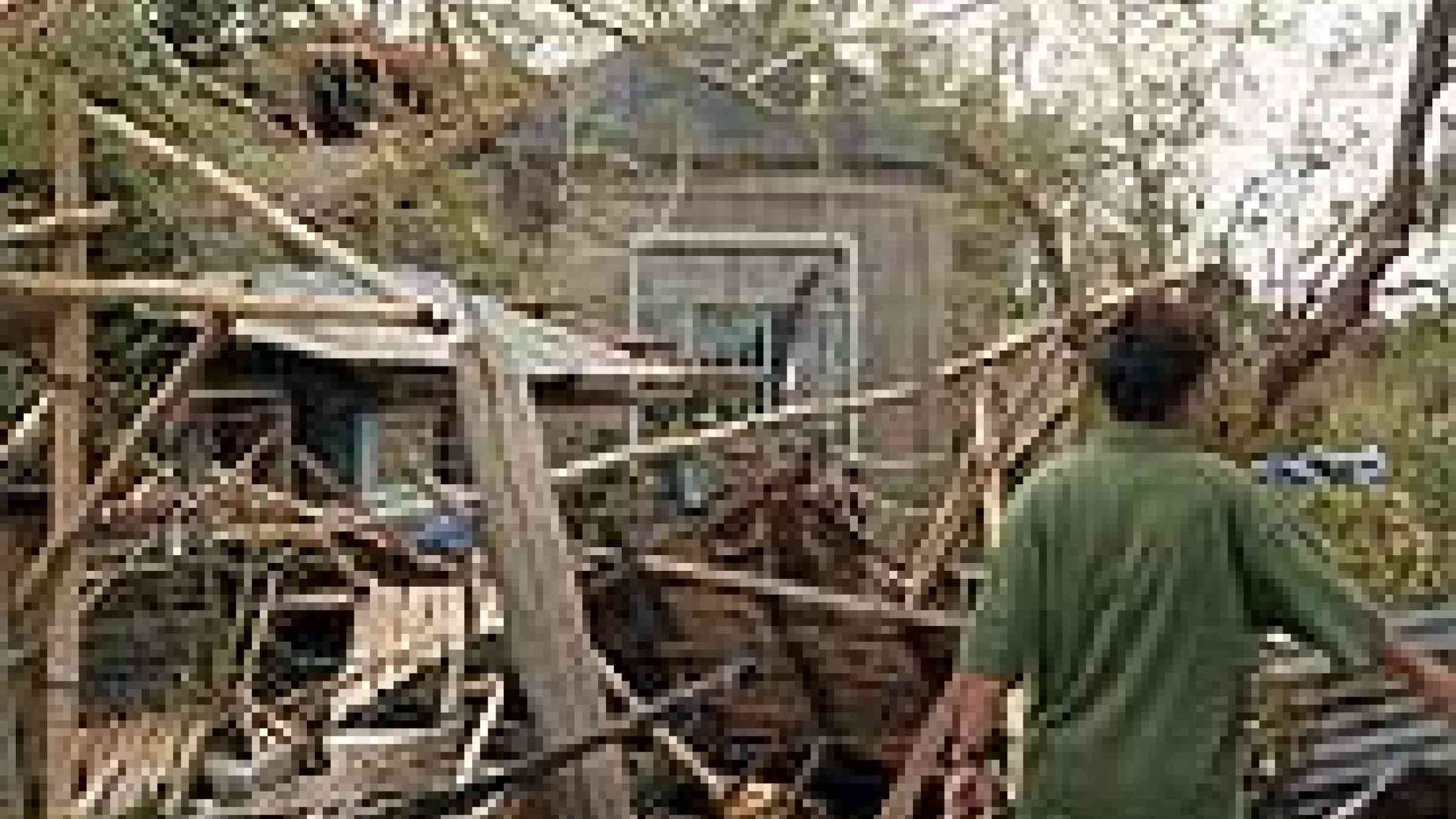Please help us improve PreventionWeb by taking this brief survey. Your input will allow us to better serve the needs of the DRR community.
Changing climate, extreme weather threatening East Asia's urban population

photo by Flikr user, Rojen Ying 1, Creative Commons Attribution-Noncommercial-No Derivative Works 2.0 Generic
Climate change leading to extreme weather events threatens many of East Asia's cities and could undercut recent economic progress in the region, disaster risk and climate change experts warned Monday.
The consequences of climate change-induced natural hazards will be particularly severe in coastal cities, said experts from the United Nations and the World Bank during the Green Cities Workshop: Reducing Vulnerability to Climate Change Impacts and Related Natural Disasters in Asia. This, they said, poses a real challenge to the managers of 30 mega cities in East Asia, most of which are near the ocean.
"The degree of impact from which cities suffer from climate change will ultimately depend on the actions and initiatives local governments take to build a more climate-resilient city," said Jim Adams, Vice President for the World Bank for the East Asia and Pacific Region.
"City officials need to understand characteristics that make their cities vulnerable to disaster risk and develop a strategy to deal with it. They need to "climate-proof" the cities to protect the urban population and property from extreme weather induced by climate change."
Home to more than 660 million of urban population, East Asia is already susceptible to natural hazards. In May this year alone, a powerful cyclone in Myanmar, a deadly earthquake in China, and a typhoon in the Philippines have severely affected millions of people, leaving close to 200,000 dead and tens of thousands still missing.
These disruptive natural hazards seem to be getting worse as well. Overall global warming may mask other more local trends, but taken all together there appears to be an increase in the intensity and frequency of natural hazards. The International Red Cross and Red Crescent reported 428 disasters annually from 1994-1998. That figure jumped to 707 during the period 1999-2003 with the greatest rise in developing countries with a devastating increase of 142 percent.
What can East Asian city managers do to reduce the risk from climate change impacts and related natural hazards? The World Bank's East Asia and the Pacific Region, the Global Facility for Disaster Reduction and Recovery (GFDRR), and the United Nations International Strategy for Disaster Reduction (UN/ISDR) have teamed up to produce a guide to understanding climate change and multi-hazard risk reduction, in which a range of solutions tailored to East Asia's urban centers is provided.
Called the "Climate Resilient Cities: A Primer on Reducing Vulnerabilities to Climate Change Impacts and Strengthening Disaster Risk Management in East Asian Cities," this guidebook was officially launched during the Green Cities Workshop, held Monday in Thailand's largest coastal city of Pattaya. The one-day Workshop brought together disaster risk and climate change experts with city administrators from 17 countries in the region and around the world. It showcased sound practices from selected cities which have taken the challenge seriously and are doing something about it.
"There are a number of actions that can be taken to reduce vulnerability to natural hazards and adapt to climate change," said Salvano Briceno, Director of the UN/ISDR. "This Primer is a useful tool to advance the understanding in cities of the linkages between disaster risk reduction and climate change adaptation."
With more people moving into the cities each month, East Asia's urban population is expected to double by 2030. Many of the region's "mega cities," those with population of more than 5 million, also are at the center of economic growth. With climate change inducing a rise in sea levels, East Asian cities are facing greater risk from storm surges and annual flooding. A projected one-meter rise in sea levels could lead to a two percent loss of Gross Domestic Product arising from shortage of fresh water, impacts on agriculture and fisheries, disruption of tourism, and reduced energy security.1 China, Myanmar, Thailand and Vietnam are expected to be most affected by rising sea levels.
"A city's growth and prosperity are closely linked to its ability to reduce its vulnerability to natural disasters and the impacts of climate change," noted Saroj Kumar Jha, GFDRR Program Manager. "It is urgent that city officials become better informed about disaster risks and climate change and adopt practical policies and programs to deal with the impacts. Ultimately, the responsibility for mitigating disaster risks and strengthening preparedness falls on city governments and communities."
The Primer is designed to be a knowledge resource that explains the causes and effects from climate change impacts and hazards. It can be used to identify issues affecting cities and develop plans to reduce the consequences of a disaster and adapt to probable future climate events. The Primer focuses on East Asia's specific vulnerabilities according to a variety of city types and provides concrete city-level examples, emphasizing sound practices from the region and around the world.
To receive a copy of the Primer on Climate Change Impacts in Urban Areas of East Asia, contact Tanyathorn Phetmanee, World Bank,
Tel. (0) 2686-8326, or Angelika Planitz, UN/ISDR, Tel. (0) 2288-1756.
Explore further
Please note: Content is displayed as last posted by a PreventionWeb community member or editor. The views expressed therein are not necessarily those of UNDRR, PreventionWeb, or its sponsors. See our terms of use
Is this page useful?
Yes No Report an issue on this pageThank you. If you have 2 minutes, we would benefit from additional feedback (link opens in a new window).